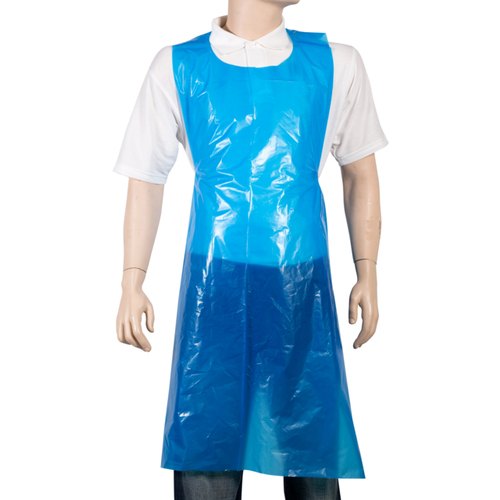Which apron offers better durability, plastic or traditional ?

Here’s a concise breakdown of cost differences between plastic and traditional aprons:
Durability Comparison: Plastic vs. Traditional Aprons
| PVC aprons excel in chemical resistance and heavy-duty use, withstanding oils, acids, and industrial wear. | |||||||||||
| TPU aprons balance flexibility and fluid resistance, ideal for medical environments. | |||||||||||
| Single-use PE aprons are lightweight and cost-effective but tear easily under stress. | |||||||||||
| Traditional Aprons (cotton, polyester, leather) provide long-term resilience: | |||||||||||
| Leather aprons dominate in heat resistance and abrasion protection for welding/metalwork. | |||||||||||
| Cotton/polyester blends offer softness, machine-wash durability, and everyday practicality for kitchens/services. | |||||||||||
| Reusable designs (vinyl, coated polyester) withstand repeated laundering and physical strain better than disposables. |
Key Takeaway:
-
Industrial/chemical settings: PVC plastic aprons win for chemical durability.
-
Heat/abrasion-heavy tasks: Traditional leather aprons are unmatched.
-
Cost-effective daily use: Machine-washable cotton/polyester aprons outlast disposable plastics.
-
Medical/hygiene needs: TPU or disposable PE aprons prioritize single-use safety over reusability.
For longevity, traditional materials like leather or reinforced fabrics generally surpass plastics in reusable scenarios. However, plastic aprons (especially PVC) are superior for specialized chemical/fluid resistance.
Plastic Aprons vs. Traditional Aprons: Ease of Cleaning
Plastic Aprons
-
Disposable types (PE): No cleaning required – designed for single use, eliminating laundering entirely.
-
Reusable types (PVC/TPU): Wipe-clean surfaces – smooth materials allow quick disinfection with minimal effort.
-
No cross-contamination risk – single-use disposal ensures hygiene without post-use handling.
Traditional Aprons
-
Cloth/fabric aprons: Require machine washing after each use, increasing labor and utility costs.
-
Leather/coated materials: Need specialized cleaning (e.g., leather conditioners) to maintain integrity.
-
Cross-contamination risk – improper laundering can spread pathogens.
Key Takeaway:
-
Plastic aprons (especially disposables) offer zero cleaning effort and hygienic convenience, ideal for high-risk environments like healthcare or food service.
-
Reusable plastic aprons (PVC/TPU) balance easy wipe-down maintenance with chemical resistance, suitable for labs/industries.
-
Traditional aprons demand time-consuming laundering, making them less practical for frequent use or strict hygiene settings.
For ease of cleaning, plastic aprons (disposable or reusable) outperform traditional options in both convenience and infection control.
Cost Comparison: Plastic vs. Traditional Aprons
| Factor | Plastic Aprons | Traditional Aprons |
|---|---|---|
| Upfront Cost | Lower per unit (disposable PE aprons are cheapest), but higher long-term expenses due to single-use design. Reusable PVC/TPU aprons cost more upfront than disposables. | Higher initial investment (cotton/leather), but reusable for years. |
| Operational Costs | Recurring purchases required for disposables. Reusable plastic (PVC/TPU) reduces replacement frequency. | Laundry/water costs for fabric apron. Specialized cleaning for leather. |
| Environmental Costs | Waste disposal fees for single-use plastics. Biodegradable options cost slightly more. | Lower environmental impact with proper care. |
| Specialized Use | PVC aprons (chemical-resistant) cost more than PE but less than TPU. TPU aprons (medical-grade) are priciest among plastics. | Leather aprons (heat-resistant) are most expensive traditional option. |
Key Takeaways
-
Disposable PE aprons are cheapest upfront (cents per unit) but incur ongoing costs and waste fees.
-
Reusable plastic aprons (PVC/TPU) offer mid-range pricing with better durability.
-
Traditional fabric aprons (cotton/polyester) have higher initial costs but lower lifetime expenses through reuse.
-
Leather aprons are most expensive but unmatched for heavy-duty tasks.
-
Hybrid solutions (e.g., Medi Plus reusable waterproof aprons) offer higher initial costs but long-term savings through durability.
Eco-Friendly Note: Biodegradable disposable aprons cost 5-10% more than standard plastic but reduce environmental liabilities. Reusable alternatives (plastic or fabric) provide the best cost-environment balance.
Conclusion
The comparison between plastic and traditional aprons underscores plastic aprons’ superiority in hygiene, efficiency, and adaptability across industries. Plastic aprons, particularly disposable PE variants, excel in infection control by eliminating cross-contamination risks through single-use protocols, while reusable PVC/TPU options offer chemical resistance and durability for specialized tasks. Plastic Apron Manufacturers in India produce cost-effective solutions that reduce laundry expenses and labor burdens, making them ideal for healthcare, food processing, and industrial sectors. Plastic Apron Suppliers in India provide lightweight, waterproof designs that enhance worker mobility and safety, addressing critical needs in high-risk environments.
Traditional aprons, though durable for long-term use, falter in hygiene maintenance due to laundering complexities and higher operational costs. Plastic aprons’ disposability ensures compliance with stringent health regulations, while advanced materials like TPU deliver flexibility and fluid resistance unmatched by cloth or leather counterparts. Plastic Apron Exporters in India cater to global demands by supplying biodegradable and medical-grade variants, bridging sustainability and functionality.
For industries prioritizing rapid workflow and contamination prevention, plastic aprons offer unparalleled advantages. Their affordability, ease of disposal, and evolving eco-friendly designs position them as the future of protective wear, outperforming traditional options in both practicality and innovation. As sectors worldwide adopt stringent hygiene standards, plastic aprons emerge as the definitive choice for modern safety needs.

